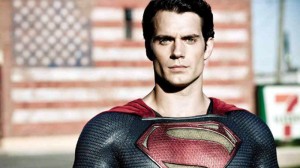Speed-of-light spin reinvigorates ‘Superman’ franchise
After all of the past productions on the big and small screens about Clark Kent and his superhero secret persona, alter ego and doppelganger, do we need yet another movie about Superman? If, you asked us last year, we would probably have sniffed, “Do we need a sixth finger on our left hand?”
But, after watching Superman’s latest and umpteenth big-screen reincarnation, “Man of Steel,” we have to abashedly admit, “Uh, yeah, a sixth finger with a cool bling ring on it would make a great extra-digital accessory!”
New take
We’ve changed our sniffy little mind on the super-subject, because director Zack Snyder’s new take on the trusty and rusty old yarn has done nothing less than stand the mythic tale on its head, give it a speed-of-light spin, and come up with a reinvigorated and action-packed reimagining that takes it farther than ever before.
It’s as if the previous productions were plink-a-plunked on a toy piano, and “Man of Steel” was made with a full symphony orchestra and a 100-member chorale!
Come to think of it, we should have expected nothing less from the maker of past stunners and radical revisions like “300” and “Watchmen”! To start with, Snyder details Clark Kent’s back story on the dying planet of Krypton, which other productions have blithely breezed through, since they were more intent on dramatizing the folksy, small-town legend about Superman growing up as a “faceless” bullied boy—until he came into his super-patrimony as a young man.
In “Man of Steel,” the Krypton scenes are presented as a “necessary” explanation for the alien child’s future feats of super-prowess, hence an integral part of its central myth that deserves detailed dramatization and underscoring.
They also introduce us, not just to the child’s parents, but also to his principal nemesis, General Zod, who initially sides with his father (Russell Crowe as Jor-El), but ends up killing him!
Thus are the bitter and seething seeds of mortal and even “immortal” conflict planted early on by the new movie’s storytelling, to haunt Clark/Superman throughout his life, until “universal” justice is attained.
—Of course, our planet has to be saved in the process, because Zod wants to enslave and pillage it to create the new post-Apocalyptic Krypton—but, on point of grand over-arching conflict and theme, it’s the even larger Jor-El and Kal-El (Clark’s name in Krypton) versus Zod conflict and theme that prevail.
To vigorously vivify the larger-than-life ramifications of this grand design, Snyder stuns the viewer with one huge battle scene after another, both on Krpyton and on planet Earth—so that, at film’s end, the audience is dazed, dazzled and drained, having been put through the wringer for the overlong movie’s entire running time.
Unselective excess
Indeed, if the film can be charged with having a major flaw, it would be its occasionally unselective excess—but, we don’t hear many other people complaining!
To be sure, “Man of Steel” does sense when to occasionally focus on the intimate aspects to its story, with Kevin Costner and Diane Lane as Clark’s adoptive parents, Amy Adams as Lois Lane and lead star, Henry Cavill, knowing when to effectively and movingly whisper rather than shout.
But, make no mistake, “Man of Steel” is virtually the antithesis of past “folksy” Superman movies: It makes its own mark as a cinematic battle of titans and gods, very much attuned to Snyder’s “signature” film, “300,” and the super-cinematic “philosophy” it so vividly and brilliantly represents.
We do miss the charm and folksy warmth of the old “Superman” flicks, and we do reel from too many computer-generated battle scenes and effects, but “Man of Steel” aims at and generally hits a bigger cinematic target—so, if it is occasionally deemed by some to falter, it’s clearly on its own terms.
